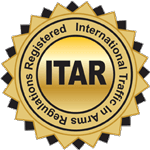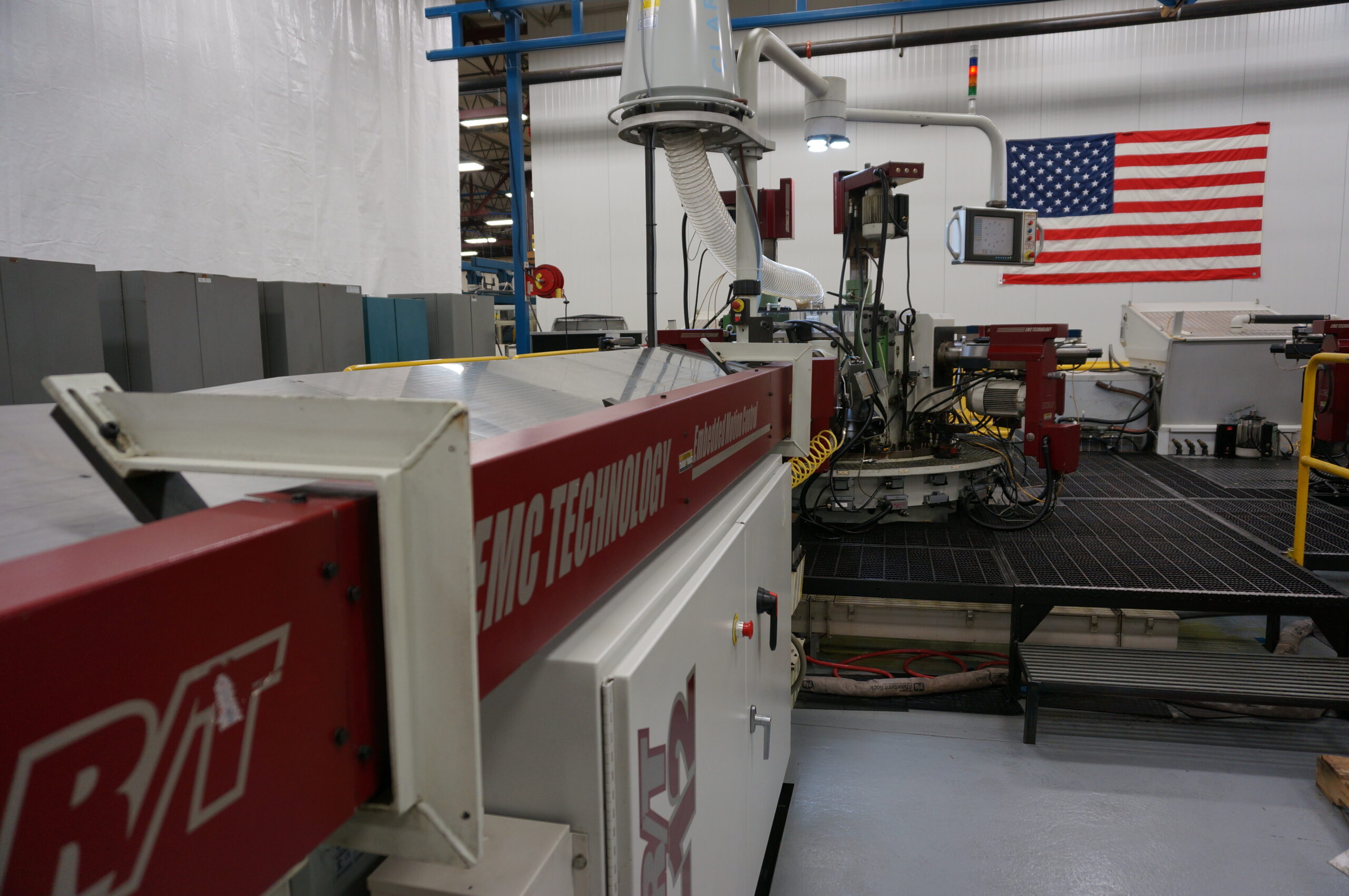Many US-based corporations that previously outsourced their production to places overseas are now looking towards sourcing production back to the United States, a process often referred to as reshoring or onshoring. Over the past few decades, manufacturing has moved from more developed economies like the United States to developing countries like China. However, ample calls for “Made in the USA” products have been louder over the past few years. The pandemic reaffirmed the need to source domestically, as offshored components became increasingly scarce as pandemic-related lockdowns negatively affected supply chains.
While the US machining industry had already seen some original equipment manufacturers (OEMs) talking about onshoring manufacturing in the late 2010s, the supply chain debacles of 2020 greatly encouraged this. OEMs will unlikely move all their machining business back to domestic machining companies, as globalization has created an interconnected web of manufacturers and distributors. Yet supply chains remain unstable with current sanctions, trade wars, and major military conflicts, so onshoring manufacturing is becoming increasingly attractive to many US-based OEMs.
Why Onshoring Manufacturing Makes Sense
Once seen as a panacea to lower labor and other production costs, US manufacturers offshored much of their production from the 1980s onwards. However, as costs rise in other industrialized countries, the economics have shifted, making it less cost-effective to offshore production. Perhaps more importantly, the changing political climate and high tariffs for Chinese components have made offshoring to China less tenable. Manufacturing by OEMs has been moving back, especially for high-precision machining of components, as accuracy, labor, shipping, and quality have made the cost of doing business within the United States much more competitive.
Onshoring manufacturing doesn’t just mean bringing production back to domestic suppliers. It also means homegrown US companies that didn’t move production overseas are expanding their operations locally, either by nearshoring – moving production to neighboring countries – or onshoring. Manufacturing giant China seems to be losing some of its dominance as a destination for OEM manufacturing as US parts producers automate their operations, and problems inherent in outsourcing to overseas manufacturers have become increasingly apparent.
Ready to automate your next job?
VIEW OUR EQUIPMENTResolving Supply Chain Issues by Onshoring Manufacturing
The world saw logistics and production issues contribute to broken supply chains in 2020, as factories throughout China were often locked down for weeks. Since so much global production had moved to China, this led to global shortages of various machined and other components. Added to this were higher costs for shipping, which inflated prices not only for parts but also for finished products. Onshoring manufacturing closer to end markets reduces this risk while saving time and transport costs. When an OEM’s components are produced closer to where they’re needed, it becomes more cost-effective for onshore manufacturing.
Though the 2020 pandemic lockdowns disrupted global supply chains considerably, conflict in Ukraine has also caused considerable disruption to supply chains, along with the imposition of trade restrictions with certain overseas producers. While OEMs will still need to deal with events affecting supply chains domestically, like chronic labor shortages and natural disasters, some have decided that the problems inherent in overseas production now outweigh any risks associated with onshoring manufacturing. Yet, there will always be a need to offshoot components like computer chips, LEDs, and other electronics, which are almost exclusively made outside the United States.
Trade Restrictions
Another factor played out over the past few years is the trade restrictions that have strained the relationship between the United States and countries with whom they trade, including the European Union and other Asian countries. Though the current US administration has pulled back from vocal support for trade wars, there continue to be considerable restrictions in trade concerning precision machined parts and machinery. Though China is not a source for most precision components, the current US administration has placed even more restrictions regarding technology transfers, making Chinese companies less useful as partners for OEMs that require precision machining.
Technology & Location
The key to onshoring manufacturing for OEMs, especially when machining precision components, involves cutting-edge technology. New technologies like artificial intelligence (AI), machine learning, and the Internet of Things (IoT) drive innovation, giving US machining companies an edge over those in many developing countries. For this reason, many companies seek companies positioned in or near high-tech corridors throughout the country when looking into onshoring. According to The Boyd Company – a location consulting firm that works with aerospace manufacturers – many OEMs look first at areas along important interstate highways or near transit hubs when selecting sites for onshoring. Manufacturing companies need to be near areas with considerable infrastructure and close to labor markets that can provide a reliable pool of highly skilled workers.
Why ESG is Important
Another reason some OEMs are moving away from offshoring in developing countries involves the need for ESG (environmental social governance) values. As many consumers have made these standards necessary in their purchasing decisions, manufacturers have looked at ways to improve their ESG standing. This includes shrinking their carbon footprint by onshoring manufacturing to truncate supply chains, which also has the added effect of reducing time in transit, shipping costs, and lead times for production.
Onshoring Manufacturing: Competitive Costs & Better Quality
Some of the most frequent issues OEMs have seen with machining from offshore companies include poor accuracy, low levels of durability, lack of stability, and frequent part failures. This has encouraged OEMs in industries that require high-precision parts to source these from more reliable partners. Often, manufacturers need to go to processing facilities to address production issues, which for offshored contracts means the expense of international travel and the added trouble of acquiring visas. This becomes even more difficult when there’s a language barrier and the supplier is a dozen or more time zones away.
While a considerable amount of machining will likely remain in developing countries, much of this is low-end or mid-level. US-based manufacturers have concentrated on more advanced methods of manufacturing that enable domestic machining companies to produce high-quality components at competitive prices. This is due to various technologies that promote automation and data analytics, which are utilized to optimize production. Onshoring manufacturing processes is increasingly seen as a means to obtain high-quality components with tight tolerances for the aerospace, automotive, defense, healthcare, and other industries that require precision parts.
Conflicts, Sanctions & Onshoring Manufacturing
The close relationship between China and Russia, especially after the latter invaded Ukraine, also brought talk of “friend-shoring” by US Treasury Secretary Janet Yellen and others. This involves moving manufacturing connections and reconfiguring logistical nodes to traditionally more friendly and reliable countries. Onshoring manufacturing of high-precision components while friend-shoring others can create win-win situations for OEMs and their partners in production.
While COVID exposed the weaknesses in the global supply chain, Russia’s invasion of Ukraine and the resulting sanctions created a nightmare scenario for those doing business with Chinese partners. China’s close relationship with Russia has already created concerns about sanctioned technology making its way to the Russian military units in Ukraine via China. As a result, sanctions have expanded to several Chinese companies, and there have been claims that Chinese components are finding their way into Russian weapons systems.
Sanctions have expanded to limit this, supported by Ukraine’s allies, including the United States. Onshoring manufacturing will eliminate the chance of OEMs doing business with sanctioned Chinese companies. Yet other concerns exist about sourcing critical parts from China, further encouraging onshoring. Manufacturing in China means potentially doing business with entities involved in committing human rights violations against the ethnic Uyghur population in western China.
Contracting with Staub for Onshoring Manufacturing
While OEMs reestablish relationships with domestic partners to return manufacturing to the United States, companies like Staub Precision Machine continue to innovate. If your company is considering onshoring manufacturing capabilities, Staub will meet and surpass expectations. To minimize risk from incomplete supply chains, consider Staub for contract manufacturing of the highest quality precision parts, with numerous other benefits for our partners.
Staub provides collaborative solutions with our leading-edge equipment and top-notch customer service. To assist with your onshoring manufacturing needs, we use automated processes and a dedicated workforce’s expertise to provide end-use components, finishing, and support services. Staub is a partner manufacturers can count on for high-volume production. To learn more about our capabilities and how we can help with your project, contact the machining experts at Staub today.



